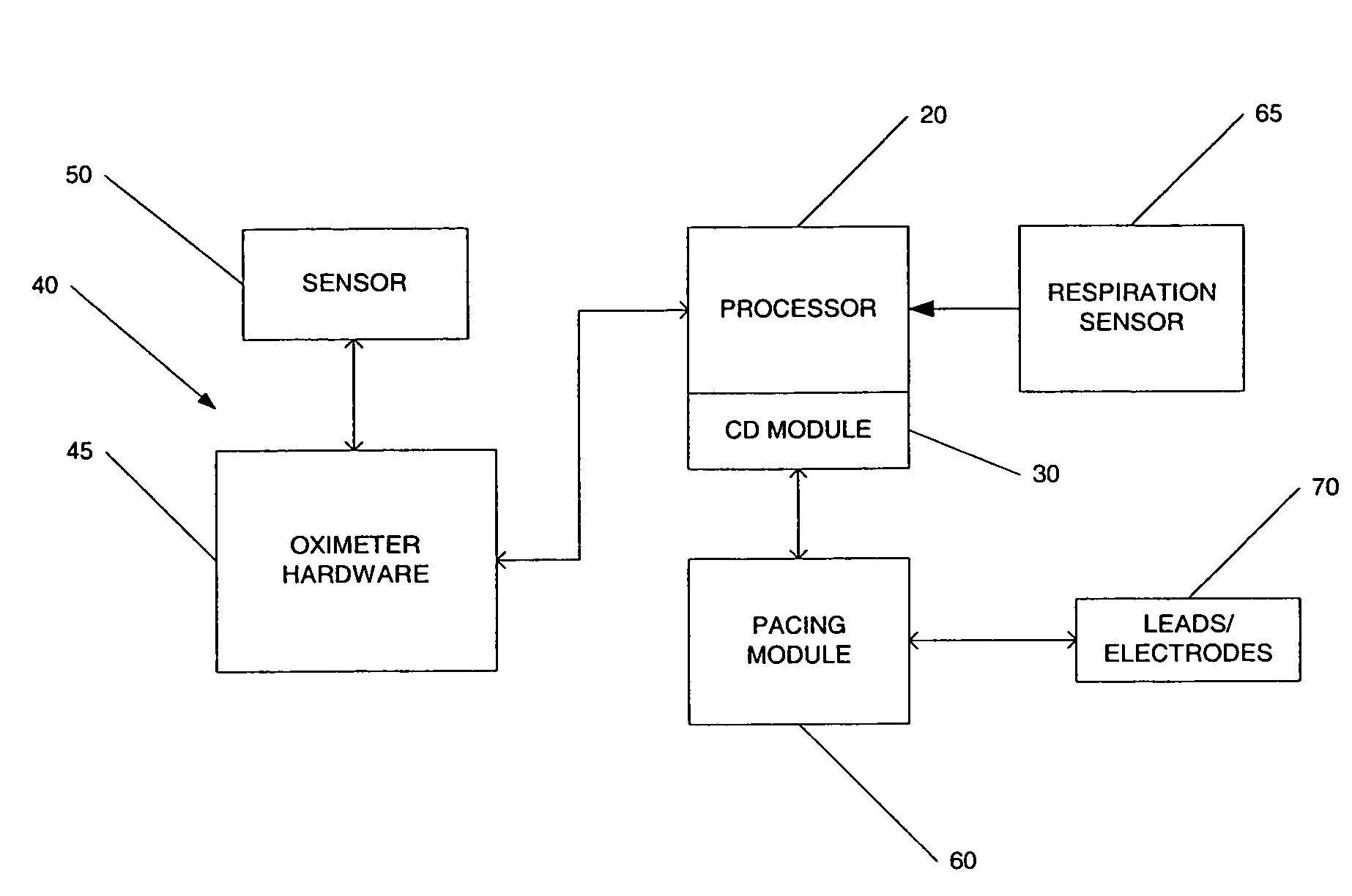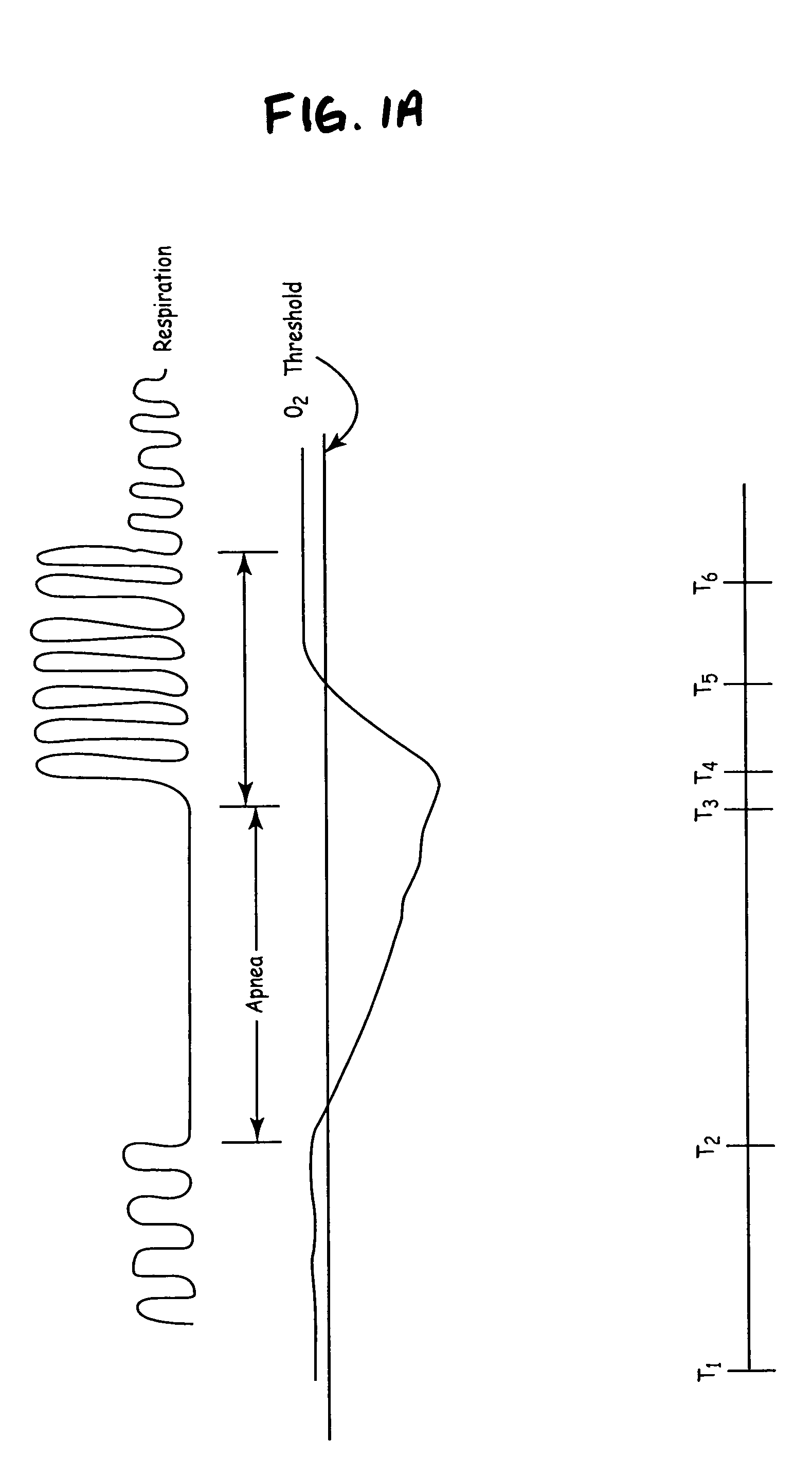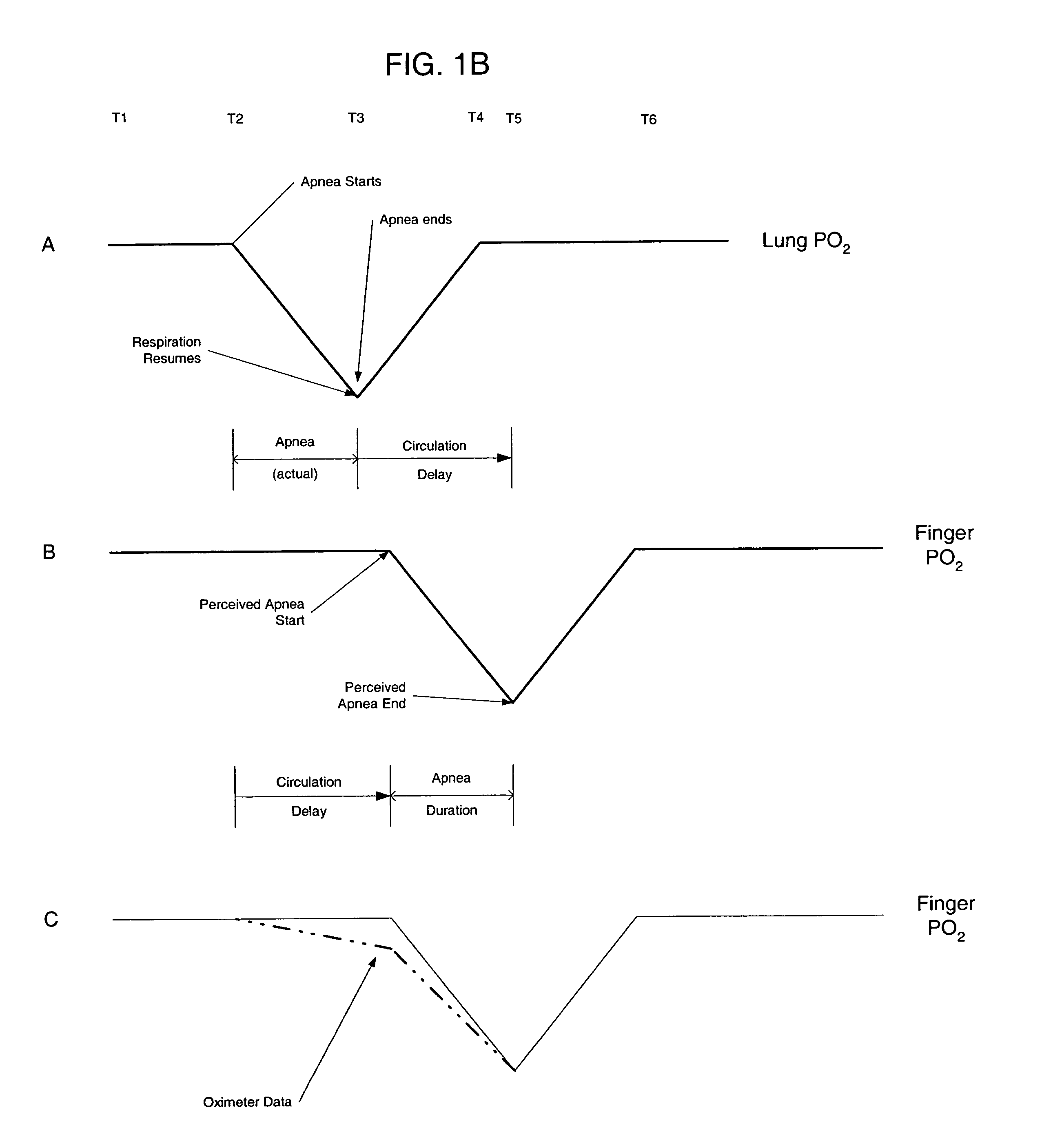Implantable medical device with circulation delay measurement and therapy control
a technology of medical devices and delay measurement, applied in the field of implantable medical devices, can solve problems such as affecting hypertension or heart failure, disordered breathing, and patterns that tend to be cyclic or repetitiv
- Summary
- Abstract
- Description
- Claims
- Application Information
AI Technical Summary
Benefits of technology
Problems solved by technology
Method used
Image
Examples
Embodiment Construction
[0024]FIG. 1A is a graphical representation of respiration and oxygen saturation over time, with oxygen saturation measured within the lungs. From time T1 (and implicitly for some time prior thereto) to time T2, respiration is normal. Oxygen saturation is also normal during this time period. What constitutes, normal arterial oxygen saturation is somewhat subjective and may be denoted as, for example, greater than 90%, 95%, 99%, or any value deemed appropriate. Functionally, this level would be the saturation during normal respiration for a given patient for a given activity level, assuming otherwise normal relevant physiological functioning.
[0025]At time T2, an apnea begins. An apnea is the cessation of breathing for some predetermined length of time (e.g., greater than 10 seconds). Thus, from time T2 to T3, there is no respiration. As such, oxygen saturation begins to decrease within the lungs concurrently with the apnea. As explained below, there will typically be a delay between ...
PUM
 Login to View More
Login to View More Abstract
Description
Claims
Application Information
 Login to View More
Login to View More - R&D
- Intellectual Property
- Life Sciences
- Materials
- Tech Scout
- Unparalleled Data Quality
- Higher Quality Content
- 60% Fewer Hallucinations
Browse by: Latest US Patents, China's latest patents, Technical Efficacy Thesaurus, Application Domain, Technology Topic, Popular Technical Reports.
© 2025 PatSnap. All rights reserved.Legal|Privacy policy|Modern Slavery Act Transparency Statement|Sitemap|About US| Contact US: help@patsnap.com



